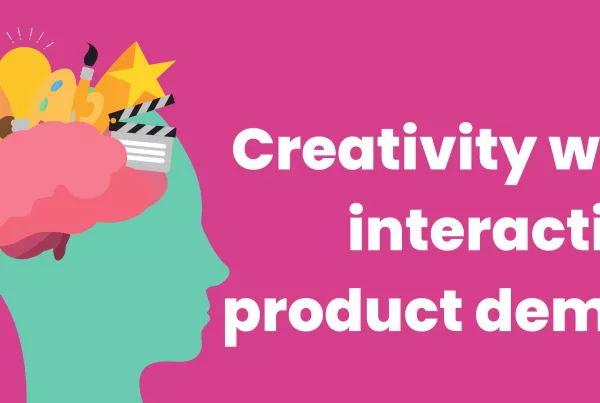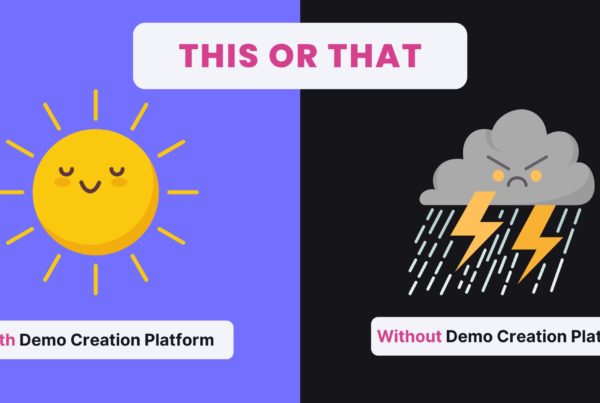Alexa Grabell, CEO of Pocus, hosts PLS AMAs with product-led sales experts to share best practices, frameworks, and insights on this emerging category. These AMAs are an opportunity to ask PLS leaders any question – ranging from hiring to sales compensation to tech stack – in a low-key, casual environment. This is a members-only event for the PLS community, but you can request an invite here.
In the latest installment, Alexa invited Kenny Van Zant, former Head of Business at Asana from 2011-2016. During his tenure at Asana they grew from a tiny startup into one of the most-used SaaS products on the market.
Needless to say, he has a lot of valuable insights to share about product-led sales in the SaaS world. Here are my favorite takeaways from the conversation.
The Two Kinds of Salespeople
There are two distinct kinds of salespeople in the tech world, and you’ll need both of them at different points in the growth process.
The first one is the R&D sales pro. When your business is in research and development mode, as all new companies are, or you’re launching a new product or moving into a new segment, this is the person you need onboard.
The R&D salesperson prioritizes intellectual curiosity over certainty, is flexible and comfortable with iterating and failing and doing it again, and is an excellent communicator. Only about 5-10% of salespeople fit into this category but they’re vital for growing a business.
In Asana, Kenny started out by only hiring this kind of salesperson. They helped him uncover the barriers in product adoption, the lowest friction path to growth, and feed this info back into the organization to help it grow.
Once you know what makes a lead that turns into a closed deal, it’s time for the next step.
The manufacturing salesperson works best at improving a system that already exists – they help your business make incremental improvements to the system in between your inputs and outputs. They’re the key to growth for the rest of the stages of business once you’re out of startup mode.
Friction is Not Your Enemy
Sales friction as a whole is not your foe. You can’t scale by being able to sell to people in the exact same way all at once – unrealistic hypergrowth comes from that idea. When your business is just starting out, you’re focused on selling to a small set of people with a really tight persona in mind. Having some friction for people outside that circle to fight through in order to buy can actually be a good thing.
Why, exactly? When someone pushes through that friction – PLG friction, deal friction, and so on – and they still want to become a customer, odds are that they’re a good fit for you long-term. They saw so much value in your product they’re willing to push through, and he definitely saw this play out at Asana.
How to Hire Your Sales Team
Kenny was happy they started hiring salespeople late at Asana. If you hire well and too early in PLG sales, he explains, it can mask problems because good salespeople overcome objections, so you fail to see problems until they’re really big. He also hired in his sales org for mission fit and a strong understanding of what they were trying to do at Asana, as well as flexibility on all things compensation-related.
Since he knew they would be fine-tuning rewards mechanisms and comp strategy as they grew, he needed reps who saw that as part of the big picture of joining a growing company instead of taking it personally. All their sales targets to start were monthly, because it was impossible to forecast out a whole year or even a quarter with confidence. He set comp plans 90 days in advance and then adjusted based on how they were doing at the time.
Plus, he explained to sales reps that there would be flexibility in how leads were distributed. Sometimes a rep would be given a lead that was really just a theory, and he was upfront about that and told them he’d make it whole if the experiment didn’t pan out. That’s why hiring for mission fit with that R&D type personality was important – they understood that this was part of the company’s growth process.
What Their Bottom-Up Sales Process Really Looked Like
During Kenny’s time at Asana, they launched with a freemium product from day one and then worked to identify a usage profile they felt was likely to monetize. His theory on monetization was that you monetize state changes in how a customer is using the product. In Asana, this looked like a team jumping on to the free version, trying it out, and then suddenly adding all this mission-critical information and data into the software.
Basically, it boils down to figuring out what indicates that someone is going from casual use to committing to the product, what does that look like? Then they named those usage patterns in a way people could remember – in the early days, these were mass leads and velocity leads.
Mass leads were indicated when there was a growth in the number of users until a critical mass was reached. And velocity was when there was a change in how much activity was happening (an uptick in data, comments, or other types of engagement). These two opportunities to monetize each then had their own lead funnels and their own reps to figure out what really worked and what didn’t. This was the “land” phase.
The expand phase was similar. The users might go from one team using Asana to three – that’s a state change as well that an expand rep could use to find if there’s an opportunity.
If you think about a perfect PLG model especially with a self-serve component, every PLG channel will drive the customer to self-serve. That means sales is pulling revenue forward, but not increasing it – because those customers were going to monetize anyways. Kenny got really curious about the delta between the revenue the sales team generates today and what they would have generated in the future, because that’s really their value.
He set up a control group from the beginning with no sales touch to see when that group would monetize – and see their sales efficiency and the value of their sales reps. By having state changes be when you monetize, sales isn’t just pulling revenue forward, they’re actually part of your self-serve model. Helping customers when it’s efficient and needed for them to upgrade, not before, is more efficient for the sales team and also a better customer experience.
Where to Focus in Your Funnel
It didn’t make sense for Kenny’s team to get 10% better at selling at the bottom of the funnel instead of focusing resources on getting one new person at the top of the funnel – and in startups, resources are limited so this is a real trade-off. People kept asking when Asana was going to add new enterprise features like SSL, but actually that didn’t make sense in the big picture. Focusing resources on attracting newer companies because there were more of them, and they were growing all the time, made more sense financially.
He found it was really ok to focus on the early life cycle of the customer forever, because there are many more companies in that stage than in the enterprise one. Their marketing really stayed oriented to the beginning of the funnel at first, and then as they grew they worked their way backwards.
The Role of Customer Success
There are two kinds of customer success teams, in Kenny’s mind – the ones that are a sales team in disguise, and the ones that are support and adoption-centric. Both can work, but he prefers the latter. They tend to think about renewals only as a way to help customers get more successful with the product. Those teams work with one foot in product and one in sales, instead of having both feet in sales, and can really help the “expand” sales team in their work.
Thanks for the insights, Kenny!
Read the original AMA recap from Pocus on their blog – The Pocus Post.
Photo by Artem Maltsev on Unsplash




